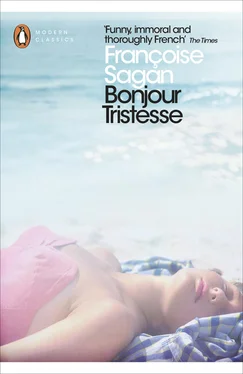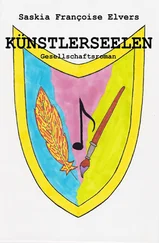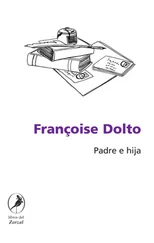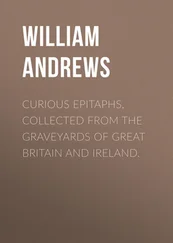9. a very fine work … The Age of Reason : The Age of Reason ( L’Âge de raison ) is the first novel in the trilogy The Roads to Liberty ( Les Chemins de la liberté ), published in 1945, by Jean-Paul Sartre. The difficulty of achieving personal freedom and meaning is highlighted in the problematic lives and relationships of a varied group of characters depicted as living in the Paris of the 1930s.
10. denim trousers : Although Dominique does not refer to her new trousers as jeans, the reference in French to their being made of toile , canvas material, does suggest that she has bought the very latest in youth fashion, jeans being popularized in the fifties through American cinema. In the next chapter she adds that her new trousers were tight-fitting.
11. Boulevard Saint - Michel : One of the principal streets in the Quartier Latin.
12. those wretched existentialists : See page 211, note 5.
13. Pelléas et Mélisande : A play by the Belgian symbolist playwright Maurice Maeterlinck (1862–1949), first performed in 1893 and later adapted by the French composer Claude Debussy (1862–1918) as an opera. Dominique’s allusion to the story is apt, if melodramatic: the lovers Pelléas and Mélisande, holding a tryst deep in the grounds of a castle, are interrupted by Mélisande’s husband, who kills Pelléas, his half-brother, with his sword. The setting and the fact that the male rivals are related and that a marriage is being betrayed provide resonances with Dominique’s immediate situation.
14. ‘ other people’ : In the French, Dominique’s reference to ‘les autres’ in inverted commas may be seen as an allusion to a well-known quotation from Sartre’s play Huis clos (1944): ‘L’enfer, c’est les Autres’ (‘Hell is other people’).
15. ‘ Such a lot of water!’ … remember : Marshal Mac-Mahon, first President of the French Third Republic (1873–9), a man not noted for his oratory, is said to have commented: ‘Que d’eau! Que d’eau!’ when visiting a town in south-west France that had been severely affected by flooding.
16. ‘ Ne’er cast a clout till May be out’ : The French proverb quoted by Bertrand’s mother takes a less pessimistic view of the weather in the month of May than does its English equivalent: ‘En avril, ne te découvre pas d’un fil. En mai, fais ce qu’il te plaît’ (‘In April don’t take off a stitch. In May do as you wish’). But she betrays her own words of wisdom by going off to get dressed again almost immediately.
17. ‘ Laughter is …’ as Alain said : Alain is the pen name of Émile-Auguste Chartier (1868–1951), a French philosopher and essayist. The words attributed to him (‘Le rire est le propre de l’amour’) appear to be a misquotation of what he says in reflecting on laughter in his work Système des beaux-arts (1920) (Book 5, Chapter 8): ‘Le rire est le propre de l’homme’ (‘Laughter is a distinguishing feature of man’), which echoes the maxim in Gargantua by François Rabelais (1494–1553): ‘Rire est le propre de l’homme.’ Rather than misquoting Alain, Dominique/Sagan may be simply extrapolating, since he goes on to argue that, in everyday conversation, trust and friendship are required for wholehearted laughter to occur.
18. four hundred francs : The currency referred to was shortly to be replaced, in 1960, by the system of ‘new francs’ in which one new franc would replace 100 francs under the previous system, having the effect of making everyday sums sound less inflated.
19. la Croisette : The main promenade in Cannes (la promenade de la Croisette).
20. Proust speaks … Albertine’s cheeks : Françoise Sagan claimed the French novelist Marcel Proust (1871–1922) as her literary master, saying in a discussion of the authors whom she had read as a teenager: ‘Proust, moreover, taught me everything’ (‘J’appris tout d’ailleurs, par Proust’) ( Avec mon meilleur souvenir , Paris, Gallimard, 1984, p.214). Albertine is a key female character in Proust’s vast work À la Recherche du temps perdu , making her first appearance in the second part, À l’Ombre des jeunes filles en fleurs (1919). The admiring narrator makes frequent reference to her cheeks, providing at one point a seven-line description of them ( À la Recherche du temps perdu , Paris, Bibliothèque de la Pléiade, 1954, volume 1, 888).
21. your little portion of the absurd : The concept of the absurd, the idea of there being a mismatch between the human desire for meaning in life and the absence of ultimate meaning, was given expression notably by the French writer Albert Camus (1913–60) as well as being an element in Sartre’s existentialism. The absurd is enough of an intellectual commonplace of the period for Luc to be able to joke about it.
22. Saint - Germain - des - Prés : A neighbourhood in Paris around an ancient church of the same name on the left bank of the Seine, in the 1940s and 1950s it was a favoured haunt of the intelligentsia and a byword for avant-garde thinking, notably existentialism.
23. the Promenade des Anglais : The main promenade in Nice, so called because it was created by English residents in the nineteenth century to provide a route for walks alongside the Mediterranean.
24. The Fenouillard Family : A French comic-strip, La Famille Fenouillard first appeared in 1889, in a children’s periodical, and later the stories were published in book form. Their enduring popularity led to the release of a film of the same name in 1961.
25. Porte d’Italie : Paris is served from its periphery by a large number of access routes, identified at the point at which they enter the city as portes (‘gates’), the Porte d’Italie being a major gateway on the south of the periphery.
26. I’m going to call you tu : In modern English only one personal pronoun is used for addressing another person: you. However, there are two possibilities in French, tu , which is primarily used for addressing a person with whom one is on friendly and familiar terms, and vous , which is more formal.
27. I went to register … restaurant : In France, networks of canteen-style restaurants catering for university students have traditionally been state-subsidized, with low-cost meals available to those holding the appropriate registration.
28. Stendhal : The pen name of Henri Beyle, French novelist and essayist (1783–1842). Best known for two of his novels Le Rouge et le Noir (1830) and La Chartreuse de Parme (1839), Stendhal also published a study on love ( De l’Amour (1822)), which could explain Alain’s interest in his work, in view of his own planned thesis on the subject of passion.
29. ‘outside of “that”, there is no salvation’ : Dominique is making a secular play on the dictum ‘Hors de l’Église, point de salut’ (‘Outside the Church there is no salvation’).
30. ‘It is very rare … summoned it’ : Like the reference to Albertine’s cheeks (see note 20 above), this quotation is from À l’Ombre des jeunes filles en fleurs ( À la Recherche du temps perdu , volume 1, p.489). Dominique’s rendering of it (‘Il est très rare qu’un bonheur vienne se poser précisément sur le désir qui l’avait appelé’) is not identical to the original (‘[…] il est rare qu’un bonheur vienne justement se poser sur le désir qui l’avait réclamé’), although the meaning remains in essence unchanged.
Читать дальше












